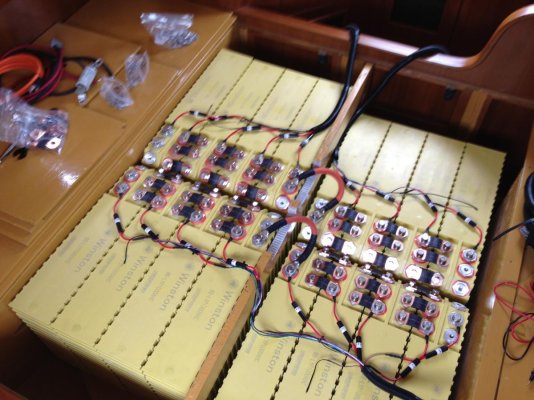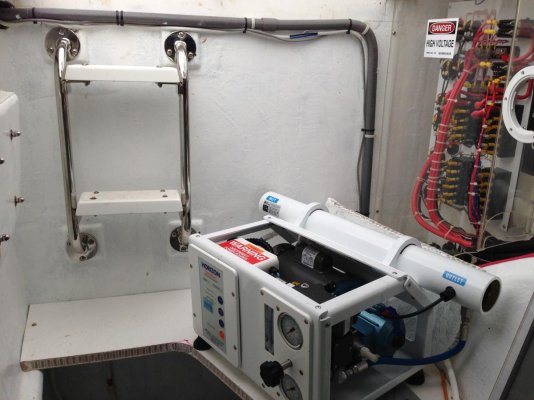Solar Powered Refrigerators
I have a 19.5 cu. ft. GE no frost refrigerator/freezer (Model TFX20RH) built in 1987 aboard my boat. On May 20, 2010 I tested the power consumption using a Kill-A-Watt meter. The test lasted 67 hours (2.8 days) with a power consumption of 9.54 kWh (142 watts average). Temperature of the interior of the boat was 70-80F and temp of the interior of the fridge was about 45F. The freezer part was about 25F.
So a typical 20 cu. ft. mid 80s refrigerator burns about 140 watts at 120 volts. Today similar fridges are much more efficient with power consumptions of as little as 50 watts.
So if you are trying to solar power a refrigerator figure 50 watts for a new 20 cu. ft refrigerator. If you've got an old beastie refrigerator from the 80s figure nearly triple that. So the obvious answer from the standpoint of keeping the solar panels small (and cheap) is to buy an effiicient new fridge. The cost of a good 20 cubic foot refrigerator/freezer can be as much as $1,400. But if you can cut back on the frills and size a good fridge using as little as $25 watts can be had for under $500.
Happy Shopping
Pete37, 10/09/2013
I have a 19.5 cu. ft. GE no frost refrigerator/freezer (Model TFX20RH) built in 1987 aboard my boat. On May 20, 2010 I tested the power consumption using a Kill-A-Watt meter. The test lasted 67 hours (2.8 days) with a power consumption of 9.54 kWh (142 watts average). Temperature of the interior of the boat was 70-80F and temp of the interior of the fridge was about 45F. The freezer part was about 25F.
So a typical 20 cu. ft. mid 80s refrigerator burns about 140 watts at 120 volts. Today similar fridges are much more efficient with power consumptions of as little as 50 watts.
So if you are trying to solar power a refrigerator figure 50 watts for a new 20 cu. ft refrigerator. If you've got an old beastie refrigerator from the 80s figure nearly triple that. So the obvious answer from the standpoint of keeping the solar panels small (and cheap) is to buy an effiicient new fridge. The cost of a good 20 cubic foot refrigerator/freezer can be as much as $1,400. But if you can cut back on the frills and size a good fridge using as little as $25 watts can be had for under $500.
Happy Shopping
Pete37, 10/09/2013





